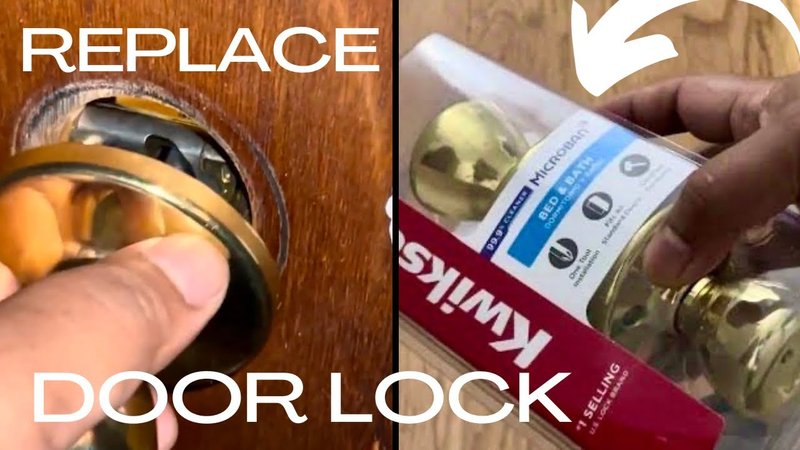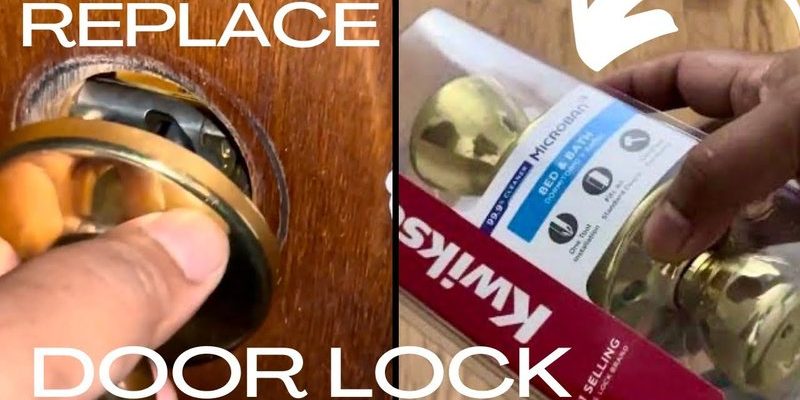
Think of the privacy pin as a bouncer at a club—it controls who gets in and who stays out. Sometimes, it takes a little adjusting to ensure everything runs smoothly. This article will guide you step-by-step on how to adjust that pesky privacy pin, no matter if you’ve got a knob from Schlage, Kwikset, or any other brand. Let’s get started on making your home just a little more comfortable.
Understanding the Privacy Pin
Before diving into the adjustments, it helps to know what the privacy pin actually does. It’s typically found on interior door knobs, allowing you to lock a bathroom or bedroom door for privacy. When you press the pin, it pops out, locking the door. To unlock, you’ll often use a small tool or a flathead screwdriver to press it back in.
This simple mechanism is designed for convenience, but like any mechanism, it can sometimes malfunction. Think of it like your car’s radio. If the buttons get sticky or out of alignment, you’ll struggle to change the station or adjust the volume. Similarly, a misaligned privacy pin can make locking and unlocking a hassle.
When the privacy pin doesn’t work as it should, you might find yourself either locked out or stuck in. That’s where learning how to adjust it comes into play, ensuring you can secure your space when you need to and open it just as easily.
Gathering the Tools You’ll Need
Before you start adjusting the privacy pin, it’s important to gather a few basic tools. Having everything on hand will make the process smoother and save you from scrambling around mid-project. Here’s a quick list of what you’ll need:
- Flathead screwdriver: This is often the go-to tool for adjusting knobs.
- Tape measure: If you need to check alignment or spacing.
- Lubricant (like WD-40): To ease any sticking mechanisms.
- Small flashlight: To see into tight areas or dark corners.
Honestly, you might already have these tools lying around your house. If not, they’re fairly inexpensive and can come in handy for other projects too. Having your tools ready lets you dive right into the task without unnecessary delays.
Locating the Privacy Pin
Now that you have your tools, it’s time to locate the privacy pin on your door knob. Depending on your universal knob’s design, it might be visible or concealed. Typically, the privacy pin is a small, round button or a lever found on the knob itself.
To find it, gently pull on the knob as if you’re trying to unlock the door. As you do this, look for the button. If it’s stuck, it might not pop out as smoothly as it should. This could indicate that it’s misaligned or needs some lubrication.
Here’s a little pro tip: If you’re having a hard time seeing the pin inside the knob, use your flashlight. The light can help you spot it without the frustration of peering into a dark corner.
Adjusting the Privacy Pin
Once you’ve located the privacy pin, you can start making adjustments. If it’s stuck or misaligned, here’s a simple method to follow:
1. Unlock the Door: First, make sure the door is unlocked so you can freely adjust the knob.
2. Remove the Knob: Using your flathead screwdriver, carefully unscrew the knob if necessary. Look for visible screws or a small release hole that lets you detach it.
3. Inspect the Mechanism: With the knob removed, examine how the privacy pin functions. If you notice it’s too tight or out of alignment, it’s time to make some tweaks.
4. Adjust the Pin: If the pin seems stuck, applying a small amount of lubricant can help it move more freely. If it’s misaligned, gently push it back into the correct position, ensuring it sits level and can easily lock and unlock.
5. Reattach the Knob: Once everything looks good, put the knob back on and test the privacy pin several times to ensure it engages and disengages smoothly.
Through this process, you’re effectively giving your knob a little tune-up—similar to how a mechanic would adjust your car’s engine. The key here is patience; take your time to ensure everything is properly aligned.
Testing the Adjustment
After you’ve made your adjustments, it’s essential to test the knob several times. You don’t want to go through the trouble of adjustments only to find out later that something still isn’t quite right.
Here’s how to test it effectively:
1. Lock the Door: Push the privacy pin down firmly and turn the knob to see if it locks securely.
2. Unlock: Use your tool (like a flathead screwdriver) to unlock it. It should release easily and without any resistance.
3. Repeat: Lock and unlock a few times. This helps ensure that everything is functioning as it should and that the pin isn’t sticking.
If everything works well, congratulations! You’ve successfully adjusted your privacy pin. If issues persist, you might have to revisit the adjustment steps or consider that the entire knob might need replacing.
Common Problems and Troubleshooting
Even with adjustments, you might still run into some common issues. Let’s break down a few of them and how to tackle them:
– Pin Sticking: If the privacy pin continues to stick after lubrication, make sure there are no obstructions around it. Dirt or debris can often cause sticking.
– Misalignment Issues: If every time you push the pin it seems to misalign, it might be worth taking the knob apart again to check if something is improperly installed or broken.
– Pin Too Loose: If the privacy pin is too loose and often falls out, check for worn-out components. Sometimes, the internal mechanism may need to be replaced.
By being aware of these common problems, you can troubleshoot effectively and keep your door functionality as smooth as possible. Honestly, it’s all about ensuring those little parts work together like a well-oiled machine.
When to Consider Replacement
Sometimes, no matter how many adjustments or lubrications you apply, the knob just won’t cooperate. It might be showing signs of wear or damage. Here are some signs that you should consider replacing your universal interior door knob:
– Frequent Malfunctions: If you’re constantly having to adjust it or it still sticks after multiple attempts, it may be time for a new knob.
– Physical Damage: If the knob shows cracks, or the privacy pin is bent, those are clear indicators that it’s time for a replacement.
– Incompatibility: If you’ve changed the door frame or other surrounding hardware, your current knob might not work properly anymore.
Replacing the knob isn’t as daunting as it sounds. Most universal interior door knobs come with straightforward instructions and require just a few tools.
Final Thoughts
Adjusting the privacy pin on a universal interior door knob may seem small, but it makes a big difference in your day-to-day comfort. By understanding how the mechanism works, gathering the right tools, and following the steps to adjust, you can keep your door functioning smoothly.
Remember, just like any home repair, some patience and a little know-how can save you from a lot of frustration down the line. Whether you’re locking your bathroom door or creating a private space for yourself, knowing how to adjust that privacy pin ensures you can enjoy your home to the fullest. So here’s to smooth locks and unlocked doors!
